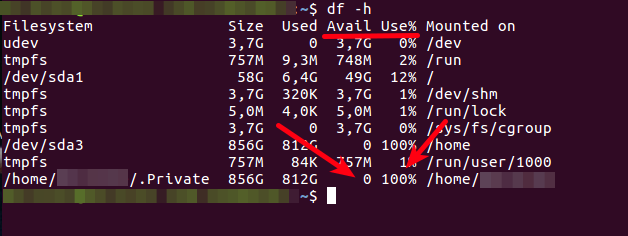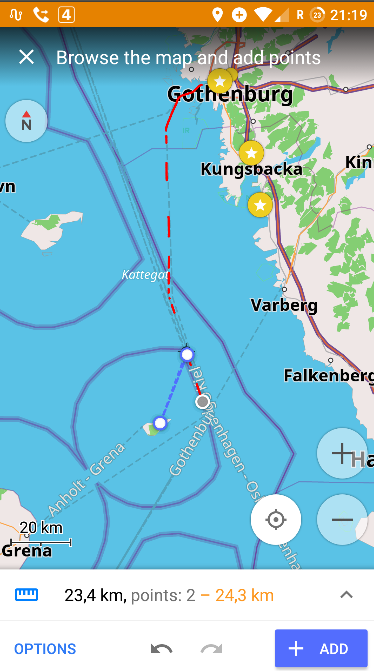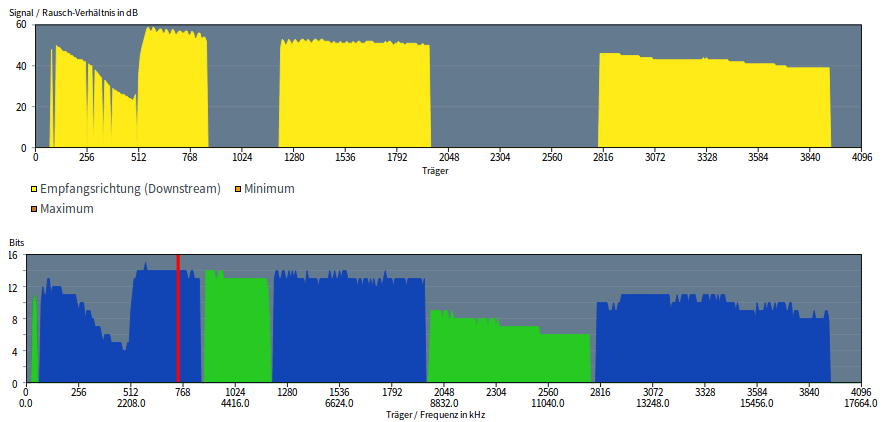A few days ago, there’s been a great talk about G.Fast at the Local Chaos Computer Club chapter (C4, Cologne) by Stefan Förster of NetCologne. Here’s a link to the video of the talk (in German). I was particularly interested, because NetCologne recently announced that they have finished their G.fast trial (using the existing telephony copper wiring in buildings) and are about to start commercial service. This sounds like great news and I had quite a number of questions in my mind, including how G.fast can coexist with VDSL Vectoring that the the national incumbent offers in Cologne today.
Category: Uncategorized
Telefonica Germany Blocks Data Roaming On Ships
One thing that I think borders on modern (digital) piracy are the charges for data roaming on board of (some) ships. Cellular on-board networks are often connected via satellite and typically, 1 MB of data transfer, which is barely enough to load the front page of a web site these days, is charged in steps 1 euro per 50 kb. In other words, a single web page costs 20 euros to download. No sane being on this planet would ever want to do that so I assume that 99.9% of the revenues generated that way are from people who’s mobile automatically registered to the on-board network when it looses contact to the land based network for a while.
Continue reading Telefonica Germany Blocks Data Roaming On Ships
What Happens When a User Runs Out Of Disk Space On Ubuntu?
 Why would anyone ever need then 640k of RAM? How could one ever fill a terabyte disk? There are orders of magnitude between those questions but both limits were easily surpassed just a few years after those questions have been asked. At the moment, a user of one of the computers I administer is approaching the second limit and I am not so sure my attempts of preventive persuasion to move some data to another disk is having the desired effect. So what happens when the disk that holds the user’s directory becomes full? Will programs just freeze? Will the computer still boot? Will suspend/resume still work? Will the user still be able to logon? Will the world come to an end?
Why would anyone ever need then 640k of RAM? How could one ever fill a terabyte disk? There are orders of magnitude between those questions but both limits were easily surpassed just a few years after those questions have been asked. At the moment, a user of one of the computers I administer is approaching the second limit and I am not so sure my attempts of preventive persuasion to move some data to another disk is having the desired effect. So what happens when the disk that holds the user’s directory becomes full? Will programs just freeze? Will the computer still boot? Will suspend/resume still work? Will the user still be able to logon? Will the world come to an end?
Continue reading What Happens When a User Runs Out Of Disk Space On Ubuntu?
LTE at Sea
 I recently took an overnight trip on a ferry from Gothenburg, Sweden to Kiel, Germany. While they were advertising free Wifi on board, which, not to my surprise, totally failed during the trip, I was looking forward to finding out, if and when I could reach the land based LTE network and get connected. As the ship ventured quite far from land, I wasn’t very hopeful that things would work well.
I recently took an overnight trip on a ferry from Gothenburg, Sweden to Kiel, Germany. While they were advertising free Wifi on board, which, not to my surprise, totally failed during the trip, I was looking forward to finding out, if and when I could reach the land based LTE network and get connected. As the ship ventured quite far from land, I wasn’t very hopeful that things would work well.
DSL, Vectoring and Line Length
 After the line of my neighbor has been switched to a different port in the street side DSLAM and mine followed a couple of days later, I finally have a stable DSL line again. There are many factors influencing the maximum uplink and downlink speed that can be achieved over a copper wire and since I’m pretty much as far away from the DSLAM as is possible in the center of Cologne, I think my line characteristics and performance gives interesting insights of what’s possible in densely populated areas.
After the line of my neighbor has been switched to a different port in the street side DSLAM and mine followed a couple of days later, I finally have a stable DSL line again. There are many factors influencing the maximum uplink and downlink speed that can be achieved over a copper wire and since I’m pretty much as far away from the DSLAM as is possible in the center of Cologne, I think my line characteristics and performance gives interesting insights of what’s possible in densely populated areas.
Book Review: A Computer Called LEO
When I was at the Centre for Computing History in Cambridge for the first time back in December 2017 I noticed a small exhibition about the LEO, the first business computer built in the early 1950s by the Lyons tea company. By a tea company!?
5G EN-DC: Flow Control Between 4G and 5G
One thing I’ve been wondering for some time now is how in 5G EN-DC, user data is split between the 4G and 5G base station in a way that takes changing RF conditions into account. It’s no good to just assign a certain data rate to the 4G and 5G side when a split bearer is initially established, as achievable speeds over the air interface can change very quickly. In other words, there must be some sort of throttling mechanism.
Long Before The Matrix – Die Welt Am Draht
Long before ‘The Matrix’ (the movie) was released in 1999, there were a number of other books and movies about people living virtual lives in virtual worlds. A couple of months ago I was recommended to watch ‘Die Welt Am Draht‘ (link to Wikipedia in German and English). A 1973 movie by Rainer Werner Fassbinder, available on Youtube (see here for a trailer with English subtitles), it is about worlds simulated in computers occupied by conscious beings that are unaware that they are just a simulation. Well, that is, all except a few and those that are, are quite unable to deal with their knowledge. Sounds very much like Matrix but 25 years earlier! The movie is based on the book Simulacron-3, written in 1964 by Daniel F. Galouye and seems to be quite faithful to the book’s original story.
Activating Plan C after a Hardware Failure
Life is a crazy ride, especially when several things go wrong one after the other. When I was recently on my way back from a business trip, a thunderstorm over Britain resulted in my flight back home to Cologne being canceled. And as that was not bad enough, my cloud system at home failed catastrophically just when the flight cancellation was announced and I had a few other things to do than to deal with that.
5G EN-DC: Let’s Talk About Signaling – SRB1/2, SRB-3, Split-SRB
This is a follow up post to my original post on 5G EN-DC, the LTE/5G Dual Connectivity (DC) variant of 3GPP 5G. About a year has passed and a lot of progress has been made in 3GPP TS 37.340, which describes the interworking between the LTE eNB and the 5G NR gNB. One thing that has become much clearer to me now is how the mobile device (the UE) communicates with the eNB and gNB to control the radio link. (No) surprise: 3GPP would not be 3GPP if there weren’t at least 3 different options for doing this.
Continue reading 5G EN-DC: Let’s Talk About Signaling – SRB1/2, SRB-3, Split-SRB